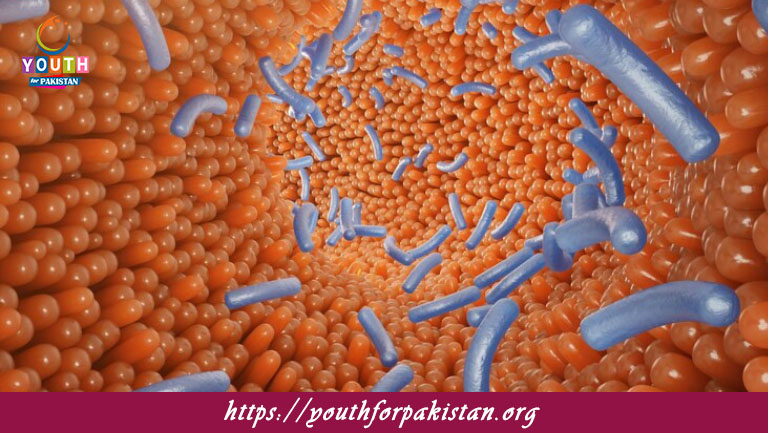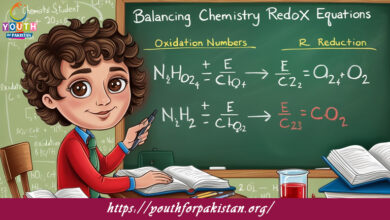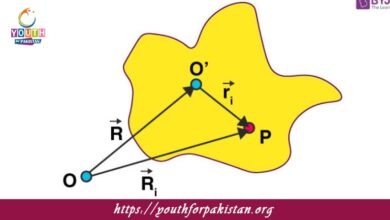Factors Effecting Rate Of Enzyme Action MDCAT MCQs

Welcome to the Factors Effecting Rate Of Enzyme Action MDCAT MCQs with Answers. In this post, we have shared Factors Effecting Rate Of Enzyme Action Multiple Choice Questions and Answers for PMC MDCAT 2024. Each question in MDCAT Biology offers a chance to enhance your knowledge regarding Factors Effecting Rate Of Enzyme Action MCQs in this MDCAT Online Test.
Which factor does NOT affect the rate of enzyme action?
a) Temperature
b) pH
c) Substrate concentration
d) Light intensity
Increasing the substrate concentration affects the enzyme action rate by:
a) Increasing Vmax without changing Km
b) Increasing Km without changing Vmax
c) Increasing both Vmax and Km
d) Decreasing Vmax
Which factor can denature an enzyme, leading to a decrease in its activity?
a) Low temperature
b) Optimal pH
c) High temperature
d) Moderate substrate concentration
The optimal pH for enzyme activity depends on:
a) The enzyme’s source
b) The enzyme’s substrate
c) The enzyme’s concentration
d) The enzyme’s temperature
Enzyme activity generally increases with temperature up to:
a) The enzyme’s optimal temperature
b) 0°C
c) 100°C
d) The substrate’s optimal temperature
Which of the following statements is true about enzyme-substrate concentration?
a) Enzyme activity decreases as substrate concentration decreases.
b) Enzyme activity increases exponentially with substrate concentration.
c) Enzyme activity levels off after a certain substrate concentration is reached.
d) Substrate concentration has no effect on enzyme activity.
What effect does a non-competitive inhibitor have on enzyme action?
a) It decreases Km without affecting Vmax.
b) It increases both Km and Vmax.
c) It decreases Vmax without affecting Km.
d) It increases Vmax without affecting Km.
In which condition is enzyme activity most likely to be at its maximum?
a) At very low or very high pH
b) At the optimal pH and temperature for the enzyme
c) At very low temperature
d) At very high substrate concentration only
Which factor affects the shape of the enzyme’s active site?
a) Temperature
b) pH
c) Substrate concentration
d) All of the above
Enzyme activity can be regulated by:
a) Enzyme inhibitors
b) Enzyme activators
c) Changes in pH
d) All of the above
The effect of increasing temperature on enzyme action is:
a) An increase in reaction rate up to the enzyme’s optimal temperature
b) A decrease in reaction rate at all temperatures
c) No change in reaction rate
d) A constant increase in reaction rate regardless of temperature
Which of the following is a common effect of extreme pH on enzyme activity?
a) Increased reaction rate
b) Decreased reaction rate
c) No effect on enzyme activity
d) Inhibition of the enzyme activity
How does a competitive inhibitor affect enzyme activity at high substrate concentrations?
a) It has no effect
b) It reduces enzyme activity
c) It increases enzyme activity
d) It decreases the rate of reaction
The Michaelis-Menten constant (Km) is a measure of:
a) The maximum rate of the reaction
b) The enzyme’s affinity for the substrate
c) The enzyme’s concentration
d) The substrate’s concentration
Enzyme activity is often decreased by:
a) Optimal temperature and pH
b) High substrate concentration
c) High enzyme concentration
d) Extreme changes in temperature or pH
Which factor affects the speed of an enzyme-catalyzed reaction by altering the enzyme’s active site?
a) Substrate concentration
b) Enzyme concentration
c) Temperature
d) Inhibitor concentration
The point at which adding more substrate does not increase the reaction rate further is known as:
a) The saturation point
b) The optimal point
c) The inhibition point
d) The maximum velocity point
Which of the following statements is true for enzyme activity?
a) It increases linearly with substrate concentration indefinitely.
b) It decreases with increasing substrate concentration after reaching saturation.
c) It is unaffected by temperature changes.
d) It is unaffected by changes in pH.
Enzyme inhibitors that bind irreversibly to the active site are known as:
a) Competitive inhibitors
b) Non-competitive inhibitors
c) Irreversible inhibitors
d) Uncompetitive inhibitors
What is the effect of increasing enzyme concentration on the rate of reaction?
a) It decreases the rate of reaction.
b) It has no effect on the rate of reaction.
c) It increases the rate of reaction up to a certain point.
d) It decreases the enzyme’s affinity for the substrate.
In which condition would enzyme activity likely be at its lowest?
a) Optimal temperature and pH
b) Extreme high or low pH
c) High substrate concentration
d) High enzyme concentration
The rate of enzyme-catalyzed reactions is influenced by:
a) Substrate concentration only
b) Temperature and pH only
c) Enzyme concentration only
d) Substrate concentration, temperature, pH, and enzyme concentration
Which type of inhibitor affects the rate of reaction by binding to the enzyme-substrate complex and altering its function?
a) Competitive inhibitor
b) Non-competitive inhibitor
c) Uncompetitive inhibitor
d) Irreversible inhibitor
The term “enzyme saturation” refers to:
a) The point where the enzyme’s activity is maximized
b) The point where the enzyme is denatured
c) The point where all enzyme active sites are occupied by substrate
d) The point where the enzyme is no longer active
Which of the following conditions would lead to a change in enzyme kinetics, as observed in the Michaelis-Menten plot?
a) Increasing substrate concentration
b) Increasing enzyme concentration
c) Changing temperature
d) All of the above
What is the effect of a reversible competitive inhibitor on the enzyme’s Km value?
a) It increases the Km value
b) It decreases the Km value
c) It does not change the Km value
d) It has no effect on Vmax
A decrease in enzyme concentration generally results in:
a) An increase in the reaction rate
b) A decrease in the reaction rate
c) No change in the reaction rate
d) An increase in substrate concentration
How does a non-competitive inhibitor affect enzyme kinetics?
a) It increases Vmax and decreases Km
b) It decreases both Vmax and Km
c) It decreases Vmax without affecting Km
d) It decreases Km without affecting Vmax
Which factor can be adjusted to optimize enzyme-catalyzed reactions in industrial applications?
a) Substrate concentration only
b) Temperature, pH, and substrate concentration
c) Enzyme concentration only
d) Inhibitor concentration only
Enzyme activity can be enhanced by:
a) Increasing enzyme concentration
b) Increasing substrate concentration beyond saturation
c) Both a and b
d) Decreasing the enzyme’s optimal temperature
The effect of increasing temperature on enzyme activity generally follows a:
a) Linear increase
b) Exponential increase
c) Bell-shaped curve
d) Decrease with no effect on the enzyme
Which of the following is a method to measure enzyme activity?
a) Measuring enzyme concentration
b) Measuring substrate concentration
c) Measuring the rate of product formation
d) Measuring the enzyme’s Km value
The effect of extreme pH on enzyme activity is generally:
a) Increased enzyme activity
b) Decreased enzyme activity
c) No change in enzyme activity
d) Increased enzyme concentration
Which statement is true about the effect of temperature on enzyme activity?
a) Enzyme activity increases indefinitely with temperature
b) Enzyme activity decreases rapidly beyond the optimal temperature
c) Temperature has no effect on enzyme activity
d) Enzyme activity is constant regardless of temperature
Which factor affects the enzyme’s ability to bind to its substrate?
a) Temperature
b) pH
c) Substrate concentration
d) All of the above
In enzyme kinetics, a high substrate concentration will:
a) Always lead to maximum enzyme activity
b) Only lead to maximum enzyme activity if enzyme concentration is also high
c) Decrease enzyme activity
d) Have no effect on enzyme activity
Which factor does NOT typically cause enzyme denaturation?
a) High temperature
b) Extreme pH
c) High substrate concentration
d) High salt concentration
Which type of inhibitor binds to the enzyme at a different site from the active site, affecting enzyme activity?
a) Competitive inhibitor
b) Non-competitive inhibitor
c) Irreversible inhibitor
d) Uncompetitive inhibitor
The effect of increasing substrate concentration on enzyme activity follows which type of curve?
a) Exponential
b) Linear
c) Hyperbolic
d) Sigmoid
How does the presence of a competitive inhibitor affect the Km and Vmax of an enzyme?
a) Increases Km and decreases Vmax
b) Decreases Km and decreases Vmax
c) Increases Km with no change in Vmax
d) No change in Km or Vmax
If you are interested to enhance your knowledge regarding Physics, Chemistry, Computer, and Biology please click on the link of each category, you will be redirected to dedicated website for each category.





